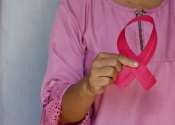Drug to reverse breast cancer spread in development
Researchers at Cardiff University are developing a novel compound known to reverse the spread of malignant breast cancer cells.
Jan 26, 2014
0
0
Researchers at Cardiff University are developing a novel compound known to reverse the spread of malignant breast cancer cells.
Jan 26, 2014
0
0
The study is the result of a collaboration of scientists at Karolinska Institutet in Sweden, University of Michigan, and University of California San Diego, USA, who were interested in finding out whether autophagy can be ...
Jul 17, 2013
0
0
A breast self-exam is an inspection of your breasts that you do on your own. To help increase your breast awareness, you use your eyes and hands to regularly observe the look and feel of your breasts.
Oct 25, 2023
0
0

Artificial intelligence (AI) can analyze breast mass images from low-cost portable ultrasound machines and accurately identify cancer, according to a study published in Radiology. This could prove useful for triage in low-resource ...
May 2, 2023
0
20

DEAR MAYO CLINIC: A mammogram showed a lump in my breast, and my doctor said it's benign breast disease. I'm glad it's not cancer, but I'm still worried. What does this mean? Does it increase my risk of getting breast cancer ...
Apr 24, 2023
0
15

You are among the women who dutifully gets an annual mammogram. Year after year, the results are "normal." But after one mammogram you are shocked to feel a breast lump, which turns out to be cancer. The tumor was hidden ...
Dec 12, 2022
0
6

Six out of ten patients who show common "alarm" symptoms for cancer are not referred for urgent investigation, a largescale new study has revealed.
Oct 4, 2021
0
4

(HealthDay)—One side effect of COVID-19 vaccination is creating undue fear among women, causing them to worry that they might have breast cancer.
Feb 11, 2021
0
156

(HealthDay)—Breast cancer in men is rare. But because it's not often suspected in men, diagnosis often comes only after a tumor has begun to spread throughout the body, new research shows.
Oct 15, 2020
0
3

In 2017, the American Cancer Society estimates more than 250,000 new cases of breast cancer will be diagnosed in the United States, with more than 40,000 deaths. But progress in treatment and early detection has led to improved ...
Oct 4, 2017
0
11

Lumpsuckers or lumpfish are mostly small scorpaeniform marine fish of the family Cyclopteridae. They are found in the cold waters of the Arctic, North Atlantic, and North Pacific oceans. The greatest number of species are found in the North Pacific.
The roe of Cyclopterus lumpus, known as the stenbider (literally "stone biter") in Danish or stenbit in Swedish, is used extensively in Scandinavian cuisine. The roe is also used as an affordable alternative to the caviar produced by sturgeons.
The family name Cyclopteridae derives from the Greek words κύκλος (kyklos), meaning "circle", and πτέρυξ (pteryx), meaning "wing" or "fin", in reference to the circle-shaped pectoral fins of most of the fish that comprise this family.
This text uses material from Wikipedia, licensed under CC BY-SA